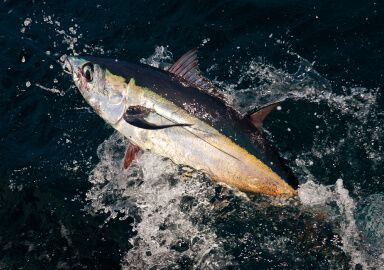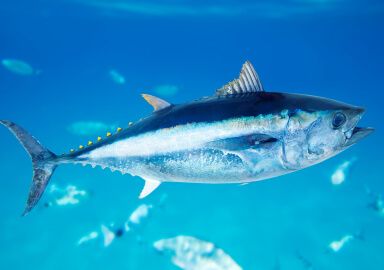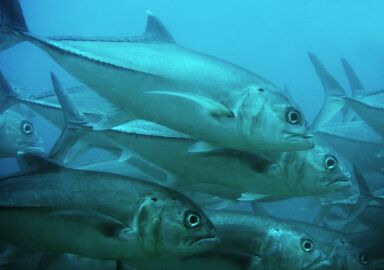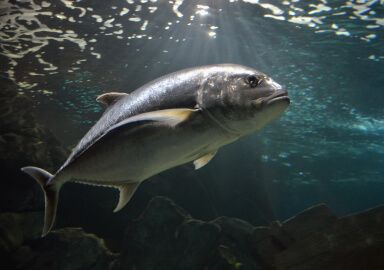Blackfin Tuna
The blackfin tuna is the smallest “typical” tuna and it is found only in the central western Atlantic Ocean.
View 32 listings
32
listings
–
price starting from
9
countries
–
to the nearest trip
Where and When?
Distributed in the western Atlantic Ocean, blackfin tuna may be found from the latitude of Rio de Janeiro in the south to Martha’s Vineyard in the north. The largest commercial fishery for this species is off Cuba where the fish are still caught by the “pole” fishing method. It is generally a fish of the open waters but can come close to shore in suitable deep water areas. It usually feeds fairly close to the surface and is often associated with large flocks of diving birds. It is easiest to find, and available throughout the year, in the central areas of its distribution adjacent to places such as Florida, the Gulf of Mexico and the Caribbean Sea. In these localities there are many harbours at which suitable boats may be chartered to target blackfin tuna. Off the more northerly states within its range it may be locally abundant at the right time of year. It is generally caught during daylight as it has large eyes and excellent eyesight that it uses to catch its usually fast moving prey.
About Blackfin Tuna
As the name implies, the blackfin tuna Thunnus atlanticus is very dark to black on the upper side, paler below and is often yellowish on the finlets and sides. Like all members of the genus, its shape is extremely hydrodynamic to the extent that its mouth, when closed, forms an almost perfect point. Despite having a life span of about five years this fish can still attain lengths of around 1.1 meters (3 ½ feet) with a recorded maximum mass of 21 kilograms (46 ¼ lb). It matures at about 2 years old, at a length of 49 centimeters, but most fish caught by sport anglers are in the length range 65 to 75 centimeters (2 - 2 ½ feet). Blackfin tuna feed mostly on smaller shoaling fish and squid. It is a highly migratory species, depending on the season, and often forms large shoals, sometimes with skipjack tuna . It is generally found in waters above 20 degrees and spawns well offshore in summer.
How to Catch?
Most blackfin tuna caught by sport anglers are landed from small to medium sized boats operating on day trips from bases along the south eastern seaboard of the USA. Many methods may be used to catch blackfin tuna including trolling, live baiting and vertical jigging. It is often, however, necessary to travel large distances to locate feeding fish and so “chumming” or “chunking” is often used to bring the fish to the boat. In both these methods material tasting of their prey items is thrown into the water to attract fish to the boat and thus the fisher. In “chunking” the pieces, usually of fish, are larger than in “chumming”. Once fish have been brought close to the boat, excellent sport may be had using a variety of fishing methods such as spinning with lures, fly fishing or live baiting. If the fish are in a “feeding frenzy” they may enthusiastically take almost any bait or lure but otherwise it is best to use fairly light terminal tackle or the fish may well see the line and not take the bait.
















